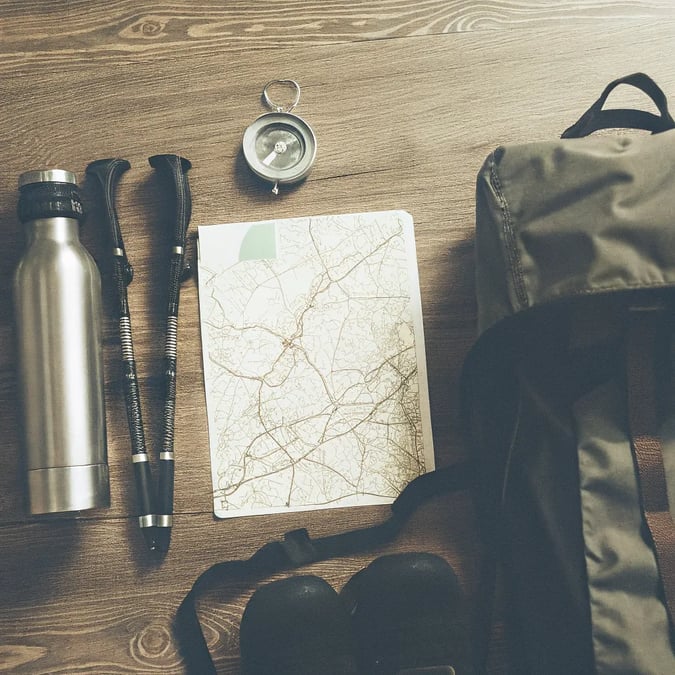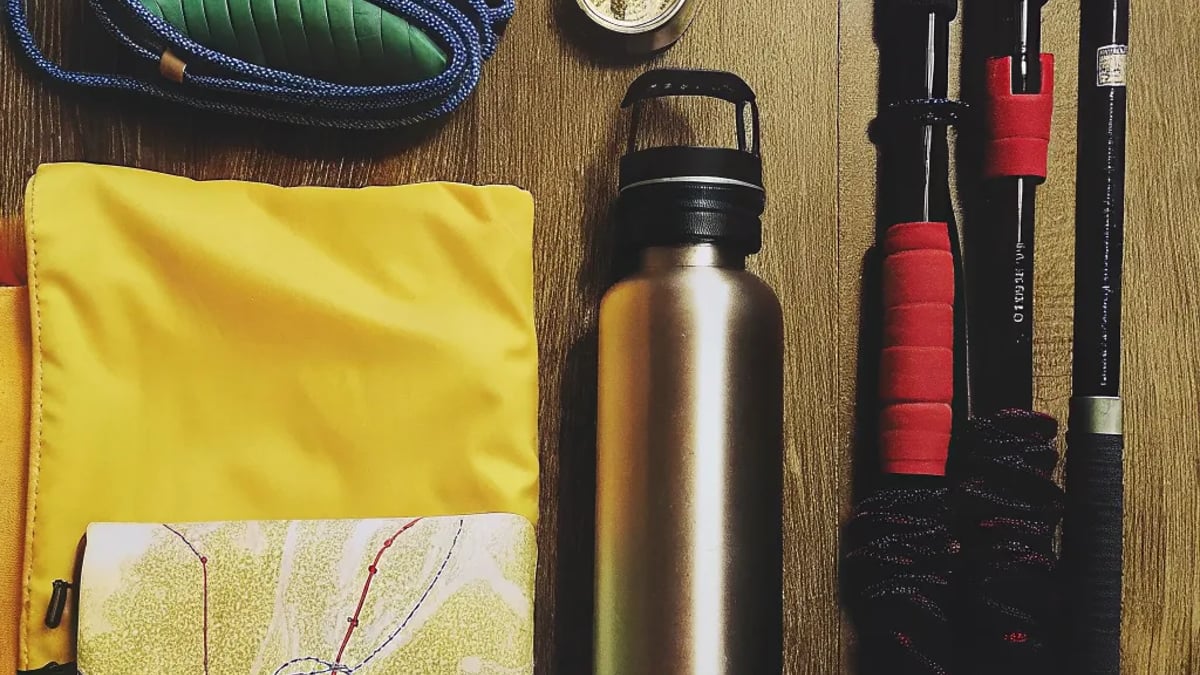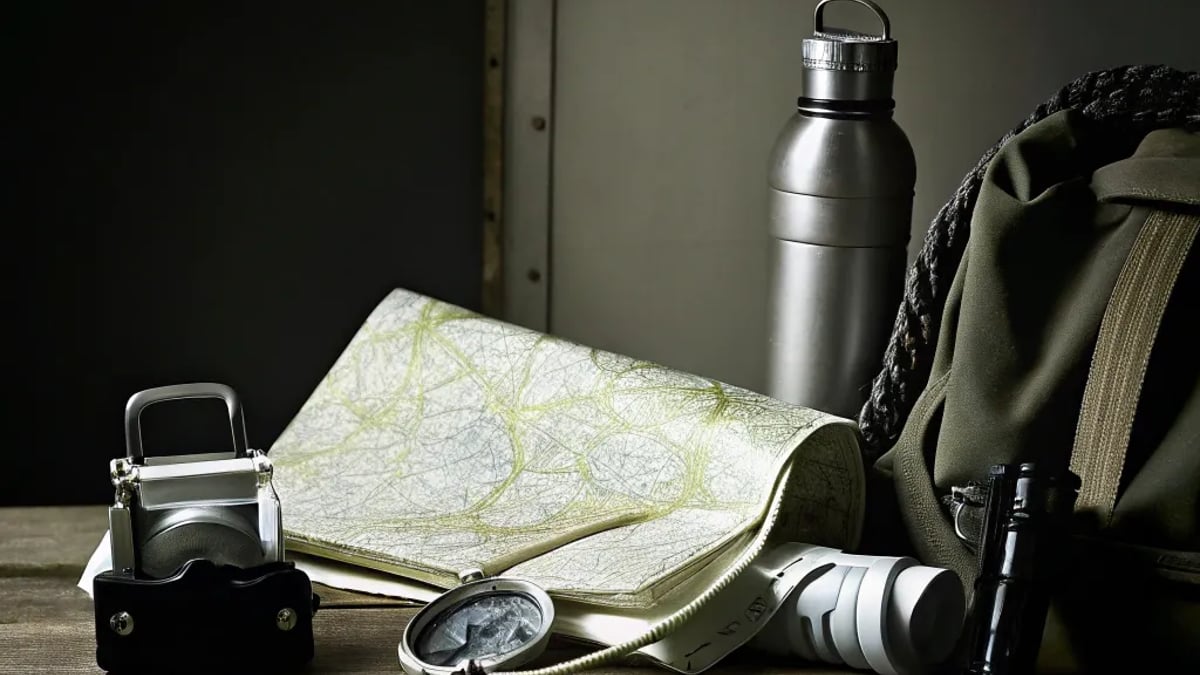
There's something magical about hitting the trails and disconnecting from the digital world, but ironically, some well-chosen tech gadgets can actually enhance your outdoor experience rather than detract from it. I've spent countless weekends testing gear on local trails, and while I'm no ultralight thru-hiker, I've learned what's worth the extra weight in my pack.
Essential Navigation Tools
Getting lost isn't just inconvenient—it can be dangerous. While traditional maps and compasses remain reliable standbys, modern GPS devices have revolutionized trail navigation.
The Garmin inReach Mini has become particularly popular among serious hikers. As noted by CNET, "For serious hikers, a GPS device is a must-have, especially when exploring less-trod trails and documenting your route afterward." What makes this device stand out is its satellite communication capability, allowing you to send messages even without cell service—a literal lifesaver in remote areas.
For those on a tighter budget, apps like AllTrails Pro or Gaia GPS can transform your smartphone into a capable navigation tool, though you'll want to pair this with a portable power bank to prevent battery anxiety.

Illumination That Won't Leave You in the Dark
I once made the rookie mistake of getting caught on a trail after sunset with only my phone's flashlight. Never again!
A quality headlamp like the Black Diamond Spot 350 gives you hands-free illumination when setting up camp or navigating in low light. The latest models offer rechargeable batteries and multiple lighting modes. Some even include red light options that preserve your night vision and don't attract bugs as much.
Water Purification Technology
"Water, water everywhere, nor any drop to drink" becomes a real problem when you're miles from civilization with an empty bottle.
The LifeStraw Peak Series Collapsible Squeeze Bottle filters out 99.999% of bacteria, parasites, and microplastics. It's lightweight and eliminates the need to carry excessive water amounts, which can significantly reduce your pack weight on longer treks.

Alternatively, the GRAYL GeoPress purifier bottle works in just 8 seconds and removes viruses in addition to bacteria—perfect for international adventures where water quality might be questionable.
What Should Beginners Prioritize?
If you're just starting out and working with a limited budget (like the Reddit user who had $150 to spend), focus on these fundamentals:
- Quality footwear (hiking boots or trail runners)
- A small daypack with hydration capability
- Weather-appropriate clothing (moisture-wicking, not cotton!)
As one helpful Reddit commenter suggested to a beginner: "Visit REI or a local outdoor store where staff actually hike themselves. They'll give no-nonsense advice tailored to your needs and local terrain."
Tech That Enhances Safety

The Outdoor Element Scout Feather Knife, recommended by HikingGuy.com, represents that perfect balance between lightweight and functional. As they note, "I rarely use a knife, but it's nice knowing I have something substantial if I need it."
For weather monitoring, the Kestrel DROP D3 Wireless Temperature & Humidity Data Logger helps predict changing conditions—crucial when storms can develop rapidly in mountain environments.
Comfort Upgrades Worth Considering
While not essential for survival, these items can transform a good hike into a great one:
The Therm-a-Rest Z Seat provides a lightweight, waterproof cushion for rest breaks. Your future self will thank you when sitting on damp or rocky ground during lunch.
Trekking poles, once considered optional, have become increasingly standard equipment. They reduce impact on knees during descents and provide stability on uneven terrain—especially valuable when carrying a heavier pack.
Remember, the best hiking gadgets are the ones that solve real problems you encounter on the trail. Start with the essentials, then gradually add specialized equipment as your experience grows and you identify your specific needs.
Tags

About Fiona Marwick the Author
Fiona Marwick is a seasoned travel gear expert with over 15 years of experience in reviewing and recommending the best seasonal equipment. Her deep passion for outdoor adventures and meticulous attention to detail make her insights invaluable for those seeking reliable gear for any time of year.
Recommended Articles
The Pet Odor Fix With No Smell and 10,000 Rave Reviews
Discover effective no-scent pet odor solutions that have received 10,000 rave reviews. Keep your home fresh without overwhelming fragrances.
7 Posture Swaps That May Help Your Back Feel Younger
Discover 7 simple posture swaps that can rejuvenate your back health and help you feel younger by improving your daily habits.
When Dizziness Means It’s Time to See a Doctor Fast
Learn when dizziness requires urgent medical attention and what symptoms to watch for to ensure your health and safety.
Understanding Anoxic Brain Damage: Causes & Recovery Facts
Dive into the intricate world of anoxic brain damage with insights from Dr. Sarah Johnson, as this article explores the critical causes, symptoms, and challenges of recovery from brain deprivation, highlighting the miraculous potential for rehabilitation even after severe injury. Uncover the proactive measures to safeguard your brain's oxygen supply and ensure swift action for the best recovery outcomes, making this an essential read for anyone interested in brain health and safety.
Why More People Are Turning to Counseling for Real Change
Discover why counseling is gaining popularity as an essential tool for personal growth, transcending its traditional role in crisis management. This article highlights the evolving perception of mental health support, the myriad benefits of counseling beyond mere symptom relief, and practical advice for navigating the counseling landscape—making it a must-read for anyone considering a transformative investment in their emotional well-being.




